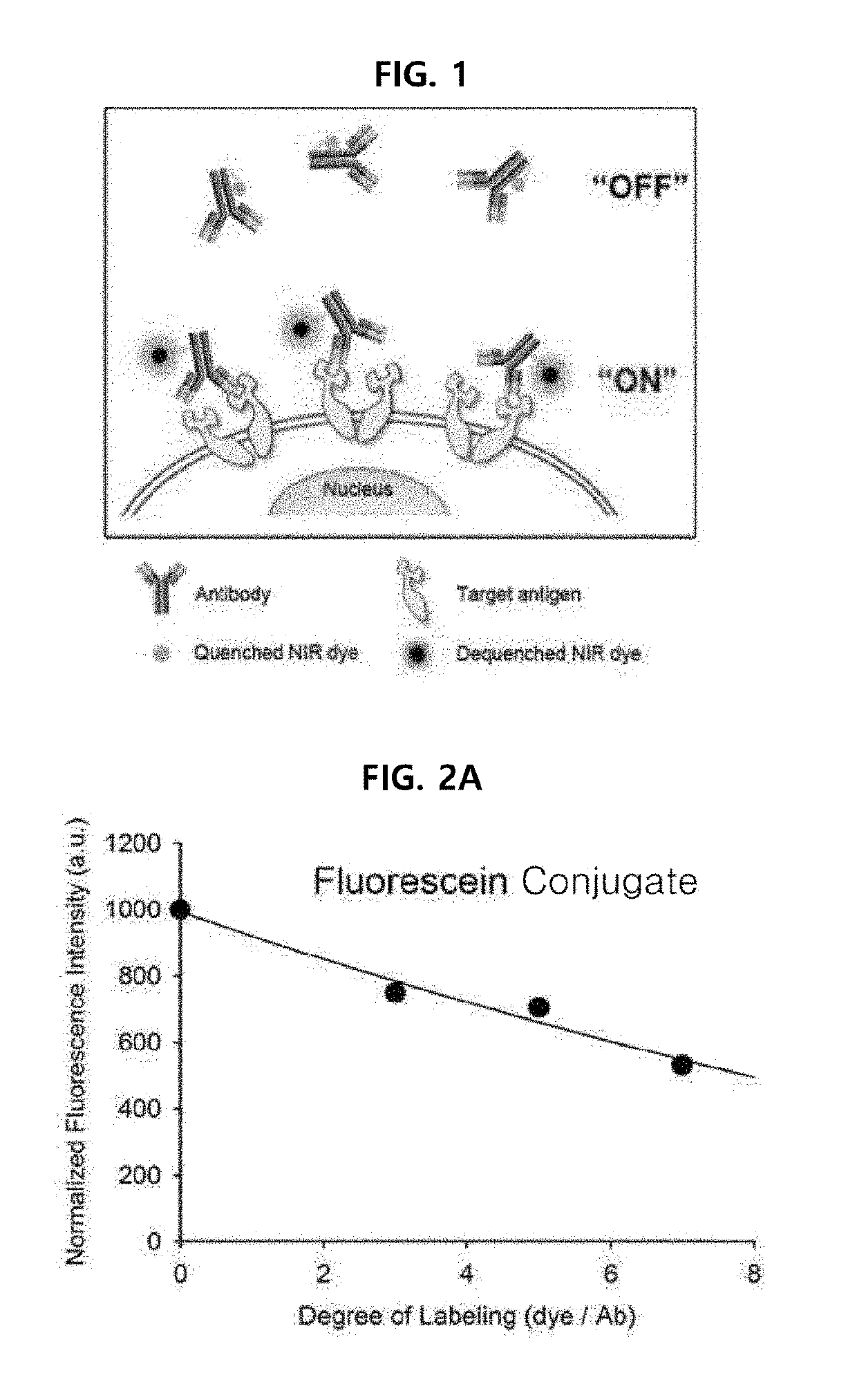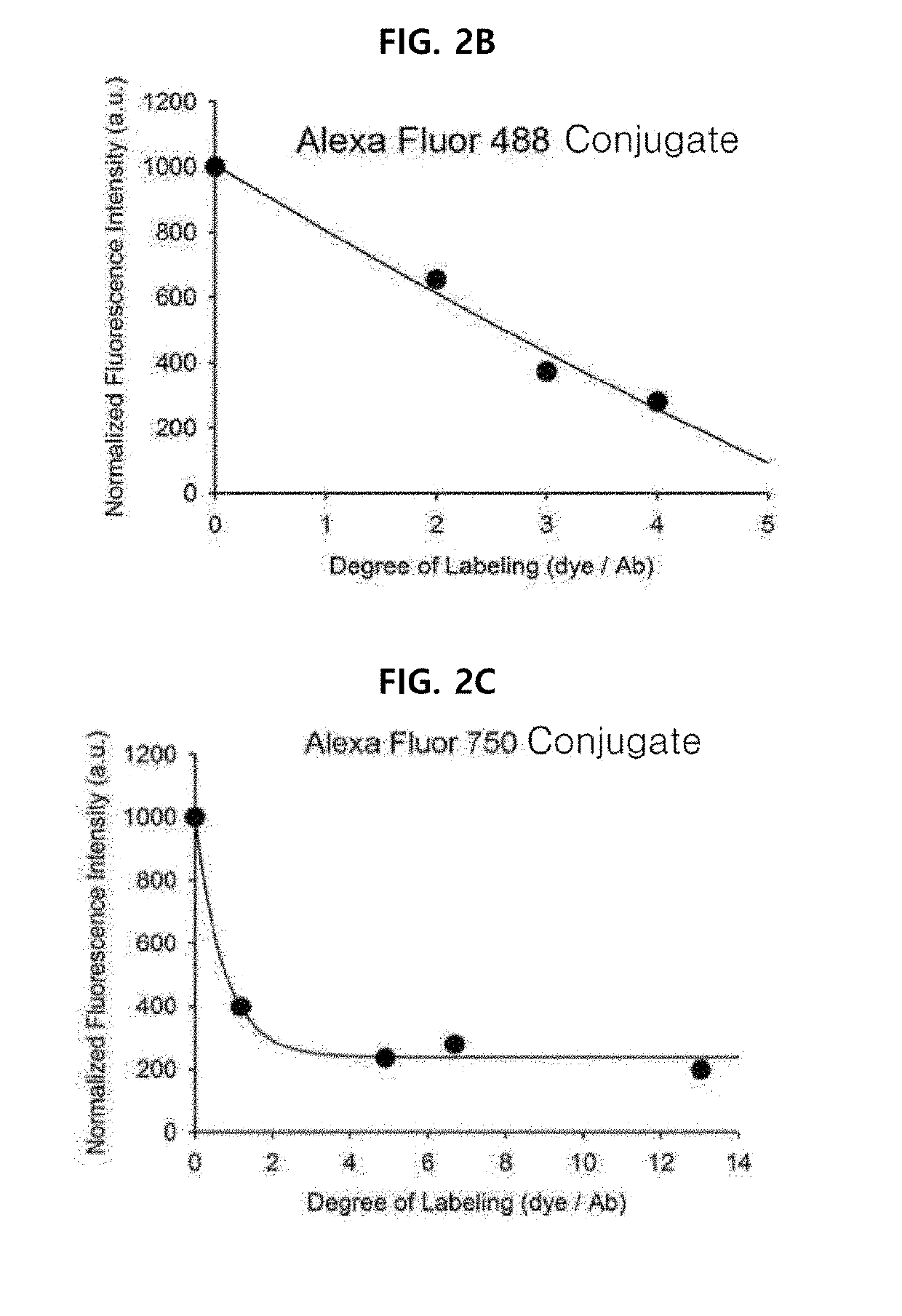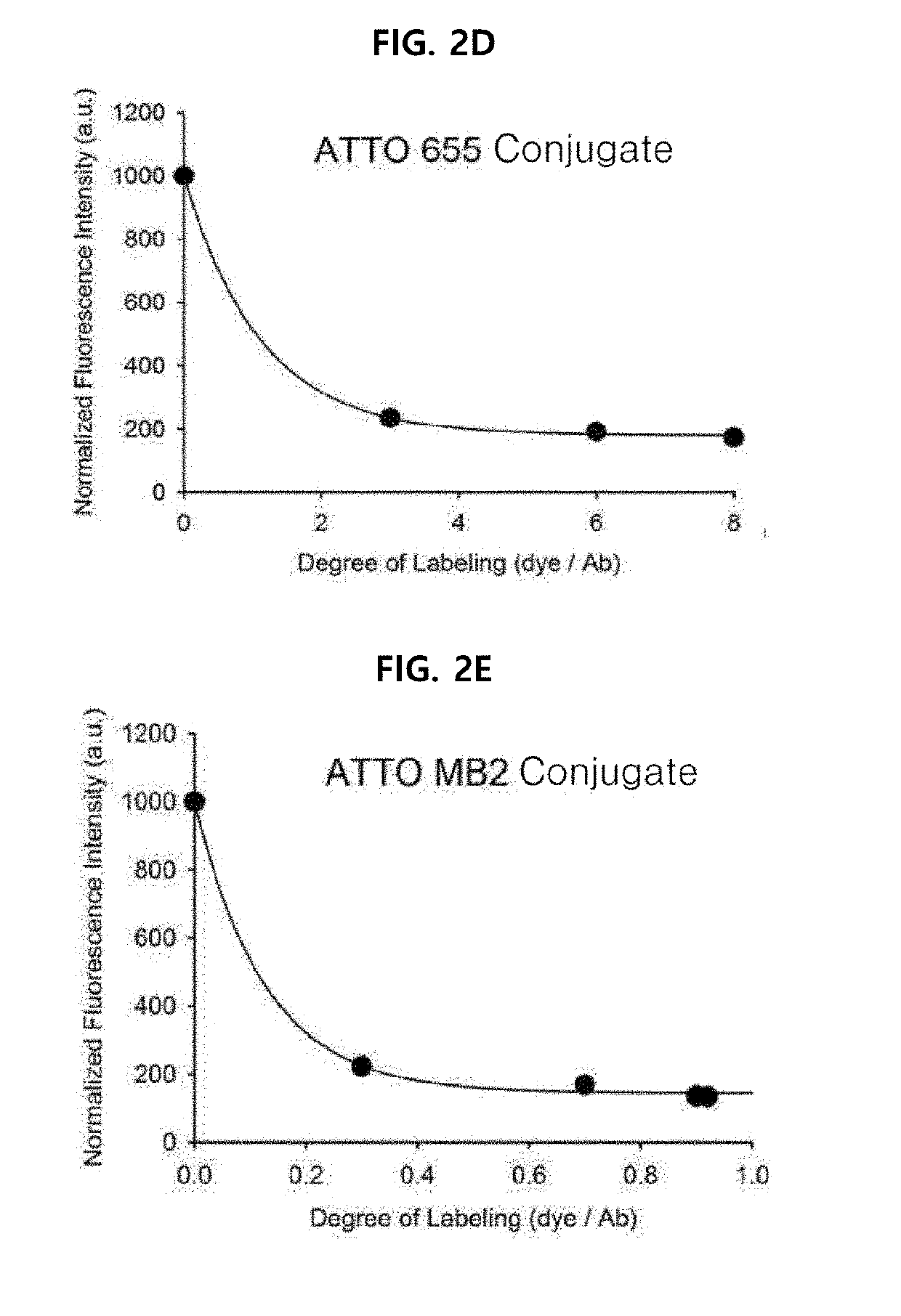Antigen responsive antibody-fluorescent dye conjugate and method for fluorescence detection and imaging of target cell using the same
a fluorescence imaging and antibody technology, applied in the direction of immunoglobulins, instruments, peptides, etc., can solve the problems of inability to distinguish whether the conjugate is bound to the target cell, fluorescent image, loss of cells, etc., and achieve the effect of dramatic enhancement of surgery accuracy and cancer treatment efficiency
- Summary
- Abstract
- Description
- Claims
- Application Information
AI Technical Summary
Benefits of technology
Problems solved by technology
Method used
Image
Examples
example 1
[0077]1.1. Synthesis of Trastuzumab-Fluorescent Dye Conjugate
[0078]Example 1 was intended to demonstrate a basic concept and utility of an antigen responsive antibody-fluorescent dye conjugate, by using an antibody that specifically binds to Human Epidermal Growth Factor Receptor 2 (HER2) which is known to be over-expressed on surfaces of cancer cells, and causing various fluorescent dyes to be bound thereto. In particular, various fluorescent dyes are caused to be bound to Trastuzumab (Herceptin), which is a representative antibody used in clinical practice among antibodies that specifically bind to HER2, and a fluorescence-quenching effect was analyzed. For synthesis of antibody-fluorescent dye conjugates, Trastuzumab (0.5 mg, 3.4 nmol), and each of amine-reactive fluorescent dyes NHS-Fluorescein, Alexa Fluor®488 NHS ester, Alexa Fluor®750-NHS ester, ATTO 655-NHS ester, ATTO 680-NHSO ester, ATTO 700-NHS ester, a methylene blue derivative ATTO MB2-NHS ester, Indocyanine green sulfo...
example 2
[0107]2.1. Synthesis of Cetuximab-ATTO 680 Conjugate
[0108]In Example 2, in order to further demonstrate that the basic concept and utility of the antigen responsive-type antibody-fluorescent dye conjugate can be applied to various antibodies, as an example of another antibody, Cetuximab (Erbitux, manufactured by Merck Serono) which is an antibody targeting epidermal growth factor receptor (EGFR) was used to carry out a second embodiment.
[0109]It has already been shown in Example 1 that a quenching concept is realized for various fluorescent dyes. Thus, present Example 2 was intended to further verify characteristics and utility of the antigen responsive antibody-fluorescent dye conjugate, by using only ATTO 680 N-hydroxysuccinimidyl ester (ATTO 680-NHS ester) as a fluorescent dye and causing the Cetuximab and the ATTO 680 to react with each other at various ratios. For synthesis of the conjugate, the Cetuximab and the ATTO 680-NHS ester were mixed at a molar ratio of 1:1 or more and...
example 3
[0120]3.1. Synthesis of Anti-VEGF-ATTO 680 Conjugate
[0121]In Example 3, in order to further demonstrate that the basic concept and utility of the antigen responsive-type antibody-fluorescent dye conjugate can be applied to various antibodies, as an example of another antibody, anti-VEGF (ab46154, manufactured by Abcam) which targets vascular endothelial growth factor (VEGF) was used to carry out a third embodiment.
[0122]It has already been shown in Example 1 that a quenching concept is realized for various fluorescent dyes. Thus, present Example 3 was intended to further verify characteristics and utility of the antigen responsive antibody-fluorescent dye conjugate, by using only ATTO 680 N-hydroxysuccinimidyl ester (ATTO 680-NHS ester) as a fluorescent dye and causing the VEGF antibody and the ATTO 680 to react with each other at various ratios. For synthesis of the conjugate, the VEGF antibody and the ATTO 680-NHS ester were mixed at a molar ratio of 1:1 or more and dissolved in p...
PUM
| Property | Measurement | Unit |
|---|---|---|
| Magnetic field | aaaaa | aaaaa |
| Fluorescence | aaaaa | aaaaa |
Abstract
Description
Claims
Application Information
 Login to View More
Login to View More - R&D
- Intellectual Property
- Life Sciences
- Materials
- Tech Scout
- Unparalleled Data Quality
- Higher Quality Content
- 60% Fewer Hallucinations
Browse by: Latest US Patents, China's latest patents, Technical Efficacy Thesaurus, Application Domain, Technology Topic, Popular Technical Reports.
© 2025 PatSnap. All rights reserved.Legal|Privacy policy|Modern Slavery Act Transparency Statement|Sitemap|About US| Contact US: help@patsnap.com



